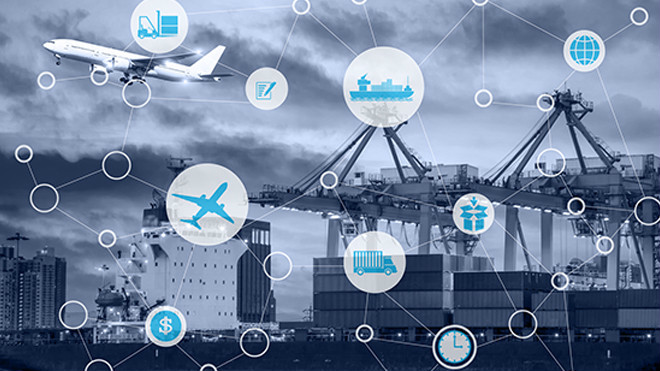Logistics is a fundamental part of any economy. Like most other industries, transportation and logistics are currently confronting immense change; and like all change, this brings both risk and opportunity. New technology, new market entrants, new customer expectations, and new business models. There are many ways the sector could develop to meet these challenges, some evolutionary, others more revolutionary. The industry is under acute and growing pressure to deliver a better service at an ever lower cost.
A considerable part of logistic industry can benefit from increased use of technology. A good logistics company can integrate all of the supply chains functions digitally, which can in turn help to track orders, vehicles and delivery to achieve better efficiency and productivity.
Indian logistics sector with the grace of digitization and technology has great potential to expand. But ‘digital fitness’ is a challenge for the industry, which is currently lagging many of its customers in this respect.
Key challenges faced by the logistics and transport industry in India
- Bottlenecks in connectivity are the foremost challenge faced by logistics industry. The performance lacks and development gets hampered because of slow transit time. India has poor infrastructure and the contrary processes take longer transit time. Such infrastructural problems and subsequently extended transit time results in an inflated cost per transaction when compared to developed countries.
- The Poor economy of scale is one of the most essential challenge faced by the industry today is insufficient integration of transport networks, information technology and warehousing & distribution facilities.
- Different State rules and regulations on logistics industry if not extensively but contributes gradually to being an impending challenge for this sector. Different Inter-state permits, licensing, and regulations at national, regional and local levels become an additional liability on this hard-surviving industry.
- Lack of trustworthy and trained workforce makes for the last challenge faced by the Indian logistics sector. This manpower-heavy industry lacks in digital culture and training of employees for efficient and controlled functions is the biggest challenge faced by transportation and logistics companies.
Impact of digitization
The dawn of technology has brought refreshing changes and development in the logistics industry. Its impact is on the face with the evident growth of services and happy customers in the logistics industry. Digitization has the competence to usher revolutionary transformations in this sector.
- With the advent of technology, logistics has advanced as the third party with giant corporations as its customers. Now, established companies hire third-party logistics for transportation purposes which leads to double fold benefits. First, companies are getting more leads resulting in augmented business whereas logistics is also emerging as an independent sector.
- Technologies such as GPS tracking, real-time surveillance, real-time temperature feed have resulted in better customer service. Although, it has also lead to increased expectations of the consumers. Prospects such as on-time deliveries, quality deliveries, instant returns, and flexibility have now become a crucial part of logistics.
- New standards of efficiency, security and safety have been formulated by the Indian logistics industry in the wake of technological progressions. Automated services and data exchanges have swollen the reliability ratio of this industry.
Organised Logistics Using Fleet Telematics
It is for the merits of video telematics that the landscape of Indian logistics sector has completely transformed. It has brought about a healthy change leading to substantial growth and development. The principal objective behind the introduction of fleet telematics into the arena of logistics was organization. Telematics has high potentials of organizing this fragmented sector of the economy. Fleet telematics is profiting the logistics industry in the following ways:
- It enables the fleet owners to ensure speed, quality, and safety to its consumers by tracking the fleet real-time.
- Fleet telematics is assisting the logistics industry in facilitating easy monitoring of fleet minutiae such as engine behavior, tire conditions, mileage, etc.
- It disentangles transportation puzzles such as route planning, demand forecasting, analyzing vehicular performance, organized achievement of targets.
- It resolves manpower issues. Driver education, monitoring driver behavior, and instituting performance-based rewards have emerged as a consequence of video telematics.
- From complex data to basic information such as hour’s driver per day, distance traveled per day, maximum and average speed, harsh braking, etc. can now be easily obtained, maintained and analyzed due to fleet telematics.

